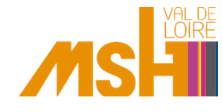Models, modelling, simulation
Scientific directors : Isabelle RABAUD (LEO) et Emmanuel SCHANG

Three laboratories created and launched this research axis:
- CITERES (Centre for Cities, Territories, Environment and Societies)
- LEO (Orléans Economics Laboratory)
- LLL (Loire Linguistics Laboratory)
The structuring themes of this research axis are modelling, models and simulation.
Modelling is driven by the expectations of theories which aim to account for the states and dynamics of complex or heterogeneous systems based on a representation (models). As a scientific tool for the representation of an observed reality, this requires abstraction and simplification which contribute to the understanding of its properties. It enables researchers to test hypotheses by simulating scenarios constructed on the basis of premises to produce knowledge about the observed phenomenon. Models can be distinguished:
- by their nature: discursive models (an annotated corpus), graphic models, conceptual models, data models, statistical models, exploratory models, mathematical models, simulation models,
- by their purpose (descriptive and explanatory models),
- by their level of abstraction depending on whether they are empirical, systemic, analogical, theoretical and whether facts are stylized to a greater or lesser extent.
Modelling is used inductively in experimental science and deductively in mathematics and is one of the formalization tools in the HSS (economics, sociology, history, archaeology, geography, psychology, linguistics, etc.) With both large-scale tests involving the interrogation of masses of data and apodictic reasoning, modelling offers a cross-disciplinary approach that brings together researchers from different laboratories.
In linguistics, modelling lies between formalisms developed for computational or implementation purposes (NCP) and the constitution of oral or written resources. It is particularly used to construct prosodic, morphonological or syntactic patterns, linguistic change models and ontologies.
In economics, modelling is made up of two distinct but complementary component parts. The theoretical hypothetical-deductive approach consists of constructing models based on assumptions about the behaviour of economic agents to shed light on the causal relationships between economic variables. Empirical modelling is complementary to this approach as its proponents use real data or experimental simulations to assess the relevance of theoretical models’ predictions or hypotheses.
Modelling of spatial dynamics is based on a systems approach to the production of space by societies. It draws on geographers’ work carried out in collaboration with archaeologists and other HSS disciplines. Descriptive models are used to represent an object or a phenomenon and formalize it, i.e. constructing a research object from an observation. They can be used to reconstruct a state, to develop a report on an organization – a spatial configuration, for example – or to highlight a change or trajectory. Thus, they offer a structured and coherent description of the phenomenon being studied that ensures the research objects can be compared and the processes involved their study reproduces. Other models test explanatory hypotheses by focusing on the nature of a change or a configuration’s observed or reconstructed trajectory.

